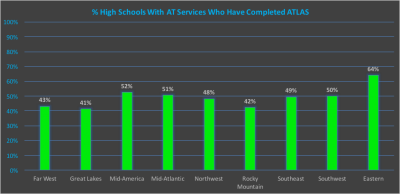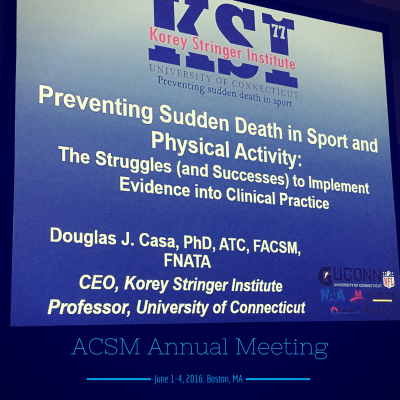By Alicia Pike, Associate Director of Research
The staff at KSI spent the past week at the 67th Annual NATA Clinical Symposia & AT Expo in Baltimore, MD. Although the meeting brings athletic trainers from all around the country to one location year after year, this year’s attendance was noteworthy. NATA’s Associate Executive Director, Rachael Oates, confirmed this year’s symposia was the second most attended in NATA history, falling close behind Las Vegas’ 15,000 attendees with an impressive 13,000!
This meeting is always a unique opportunity for KSI to showcase all of the notable research that has been conducted over the past years. It serves as a means of educating the athletic trainers in attendance with novel research topics and findings. William Adams, Vice President of Sport Safety, kicked the list of KSI presentations off with his minicourse titled, “Developing and Implementing Evidence-Based Best Practice and Procedure for the Prevention of Sudden Death in Sport.” On Thursday morning, Lesley Vandermark presented information about medical care provided in lieu of an athletic trainer in the public secondary school setting, a small subset of data that came from the CATCH-ON study investigating the prevalence of athletic training services in the public sector. Congratulations to Lesley, as she was one of the Doctoral Oral Student Award Finalists!
On Thursday afternoon, three of our staff members all had Free Communication Poster Presentations at this year’s symposia. Rachel Vanscoy presented data on the shortened environmental symptoms questionnaire and it’s ability to represent physiological adaptations following heat acclimation. Yuri Hosokawa, Director of Communication and Education, presented on the effectiveness of tarp-assisted cooling as a method for cooling hyperthermic individuals. KSI’s Director of Research and Military and Occupational Safety, Luke Belval, also presented data on cooling individuals with exercise-induced hyperthermia, but with a novel cooling vest. The day’s presentations from KSI staff continued with William Adams, Rachel Katch, and Sarah Attanasio presenting in a rapid-fire oral presentation session titled “Trends & Interventions for Heat & Hydration Risk Reduction.” Will spoke about policy changes reducing exertional sickling related deaths in DI football players. Similarly, pertaining to policy changes, Sarah, Assistant Director of Research, presented data on the occurrence of exertional heat stroke in high school football athletes prior to and following the implementation of heat acclimatization guidelines. Rachel, KSI’s Associate Director of Military and Occupational Safety, was the last KSI staff member presenting her work in this session from her Master’s thesis titled, “Use of the Heat Stress Score to Predict Preparedness to Run in an Outdoor, Warm Weather Race.”

Yuri Hosokawa and Dr. Douglas Casa, KSI’s CEO, both presented in a feature presentation on malignant hyperthermia in physically active populations. Yuri provided attendees with a summary of case reports, while Dr. Casa followed up with clinical implications. Alicia Pike, Associate Director of Research, presented data on the various individuals that secondary schools use to provide medical care when an athletic trainer is not employed. KSI’s Director of Sport Safety, Samantha Scarneo, presented data on agility and injury risk in youth basketball players. Last but certainly not least, Rebecca Stearns, KSI’s COO, had the opportunity to present a special topic on the effectiveness of protein as an ingredient in hydration beverages. It was a special year as almost all staff members at KSI were given the opportunity to present their research and knowledge to the attendees.
This year’s symposium was especially unique as the NATA Research and Education Foundation turned 25! In celebrating the silver anniversary, the NATA Foundation hosted a remarkable dinner on Friday night to celebrate their yearlong theme of “Remembering Our Roots, Growing Our Future.” The staff at KSI had the opportunity to attend the spectacular event and support all the Foundation has accomplished and what they will continue to do in the coming years! The attendees heard from Dr. Brian Hainline, chief medical officer of the NCAA, who championed for athletic trainers and showed utmost support for the profession.






